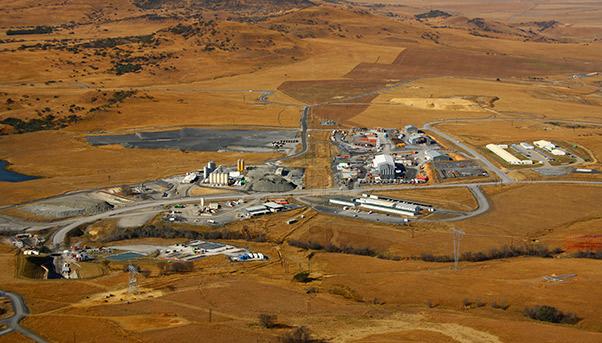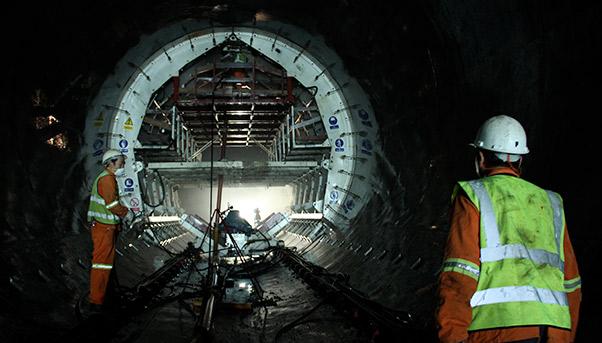
Nestled under a mountain range in South Africa lies a giant that is ready to come to life. It is a massive power house buried deep underground whose turbines will start generating electricity in a matter of months to help the country’s biggest utility meet the growing demand for power.
The utility, Eskom, has struggled to keep up with the demand. Although it has made great strides in reducing their frequency in recent years, blackouts still occur. So it is carrying out a plan to strengthen its network by increasing its production capacity by 10,932 megawatts (MW). The power house, located below the Little Drakensberg mountain range along the border of the KwaZulu-Natal and Free State provinces, is part of that plan. It and two other new plants are to add a combined 10,932 MW within 2022, expanding installed capacity by 23%.
Known as the Ingula Pumped Storage Scheme (IPSS), it will have a production capacity of up to 1,332 MW when it goes into operation in the second half of the year. «Ingula is a significant part of our massive infrastructure development programme», South African President Jacob Zuma once said.
Built by the CMI Joint-Venture with Italy’s Salini Impregilo as one of its partners, the IPSS comprises a power plant and a pumping station with a dam and accompanying reservoir on either side of it – one above an escarpment and another below it. Kilometres of tunnels, galleries and shafts make up the rest of the massive complex. Named after the area of the same name, Ingula, it is a virtual green giant. Its design and construction follows the principles of sustainability and are especially attentive to the surrounding environment. And when it eventually comes to life, it will be a virtuous producer of renewable energy by recycling the water that it uses.
«We are on the last stretch», says Avin Maharaj, senior project manager of the project. «Yet we are prioritizing safety and zero harm and quality standards… while sustaining mutually beneficial stakeholder relations.»
Although the IPSS, which uses a system known as Pumped Hydroelectric Storage (PHS), works much like a hydroelectric plant, it only produces electricity when the need arises. In the case of South Africa, that would be at peak hours of the day.
With hydroelectric energy stored in the form of water behind the upper dam’s reservoir, it can be put into action in less than three minutes. The reservoir’s storage capacity will be 21,000 MW hours once it is filled with water.

This ability to produce electricity at a moment’s notice contrasts with that of a thermal power station, which is not as nimble in starting and stopping its turbines. This makes the PHS system ideally suited to help Eskom handle the volatility that it experiences on its grid amid frequent changes between surpluses and shortages of electricity.
Another distinguishing feature of the PHS is its ability to recycle up to 80% of the water it uses, making it the most cost-effective way to store large amounts of hydroelectric energy.
It is the fourth of its kind to be built in South Africa, but it is the biggest in terms of generating capacity at 1,332 MW.
During peak hours when demand for power is strongest, the IPSS will draw water from the dam’s reservoir at the top of the escarpment and have it surge down two headrace tunnels to churn four 333 MW Francis turbines. The rated generating head – also known as hydraulic head or water drop – from the reservoir to the turbines is about 434 metres. After the water passes through the turbines and empties into the second dam’s reservoir below the escarpment, the IPSS can use the same turbines to pump it back up to the top during off-peak hours when demand is low and its services less needed.
Since it is 116 storeys underground, the IPSS will leave virtually undisturbed the surrounding area where more than 300 species of birds including the endangered Southern Bald Ibis and White-winged Flufftail come to nest. The only significant
sections that will remain visible will be the dams and their respective reservoirs, the capping structures of the surge shafts and the inlet and outlet structures.
With the help of conservationists, Eskom and the joint venture have taken great lengths to preserve the area as much as possible. The lower wetland and grassland at the top of the escarpment, for instance, are recognized by experts as two of the most fragile habitats in the world.
When the construction of the upper dam and reservoir deprived some birds of their nesting ledges, an artificial one was built to compensate for it. This and other efforts to protect the environment led the joint-venture to be named the Best Principal Contractor, Environmental Management by Eskom in 2013.
It was also the first Eskom construction site to receive ISO14001 certification in March 2011.

